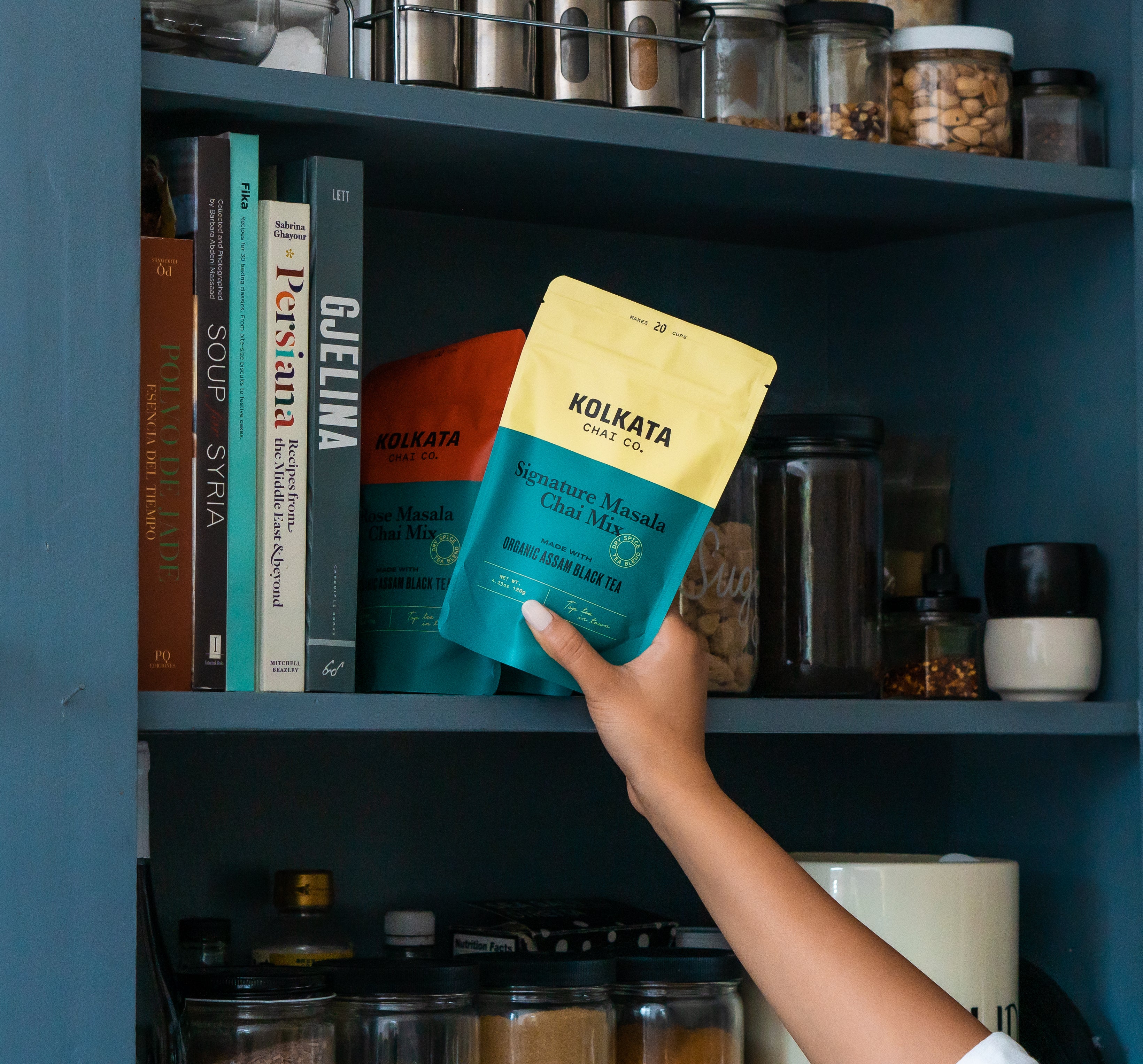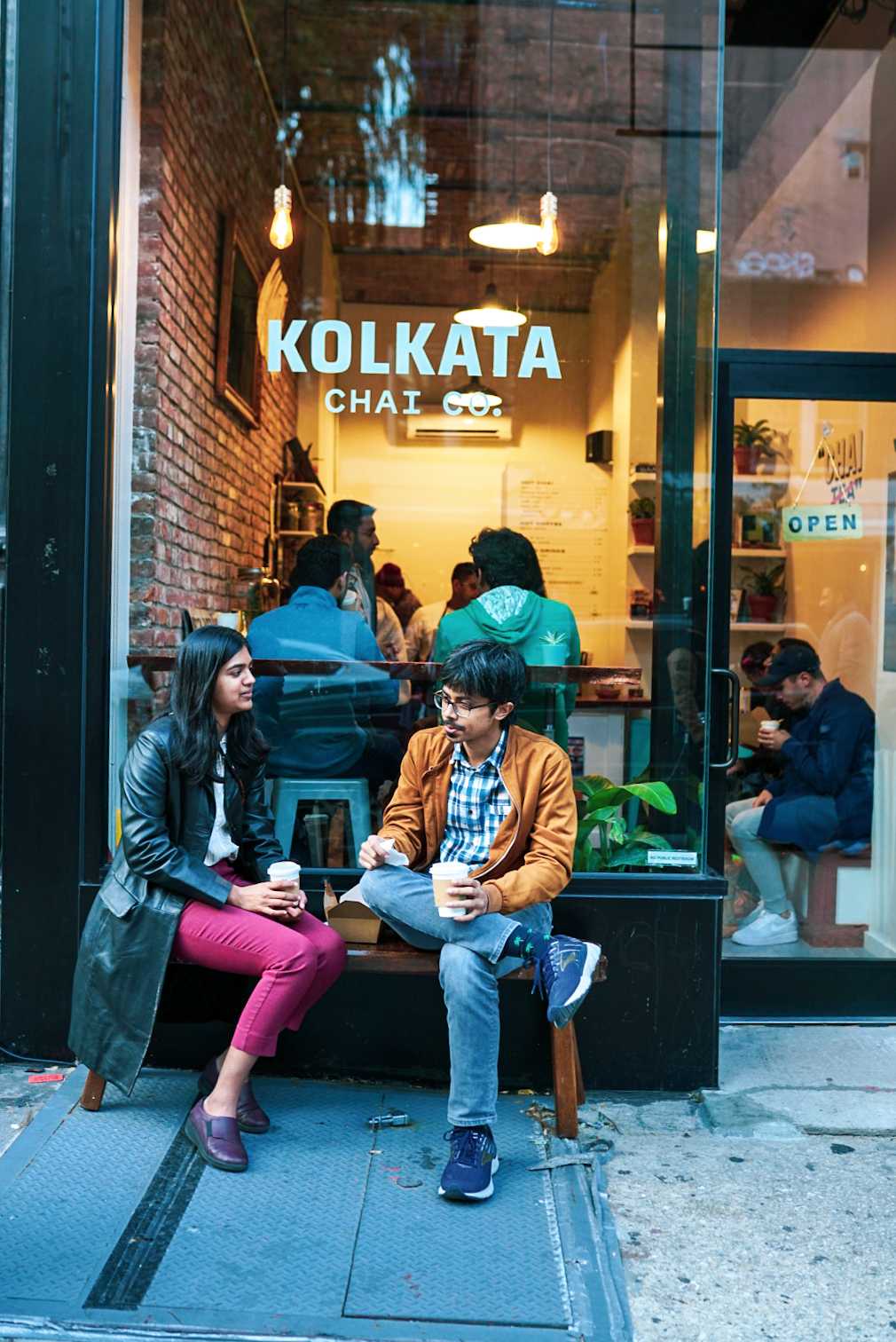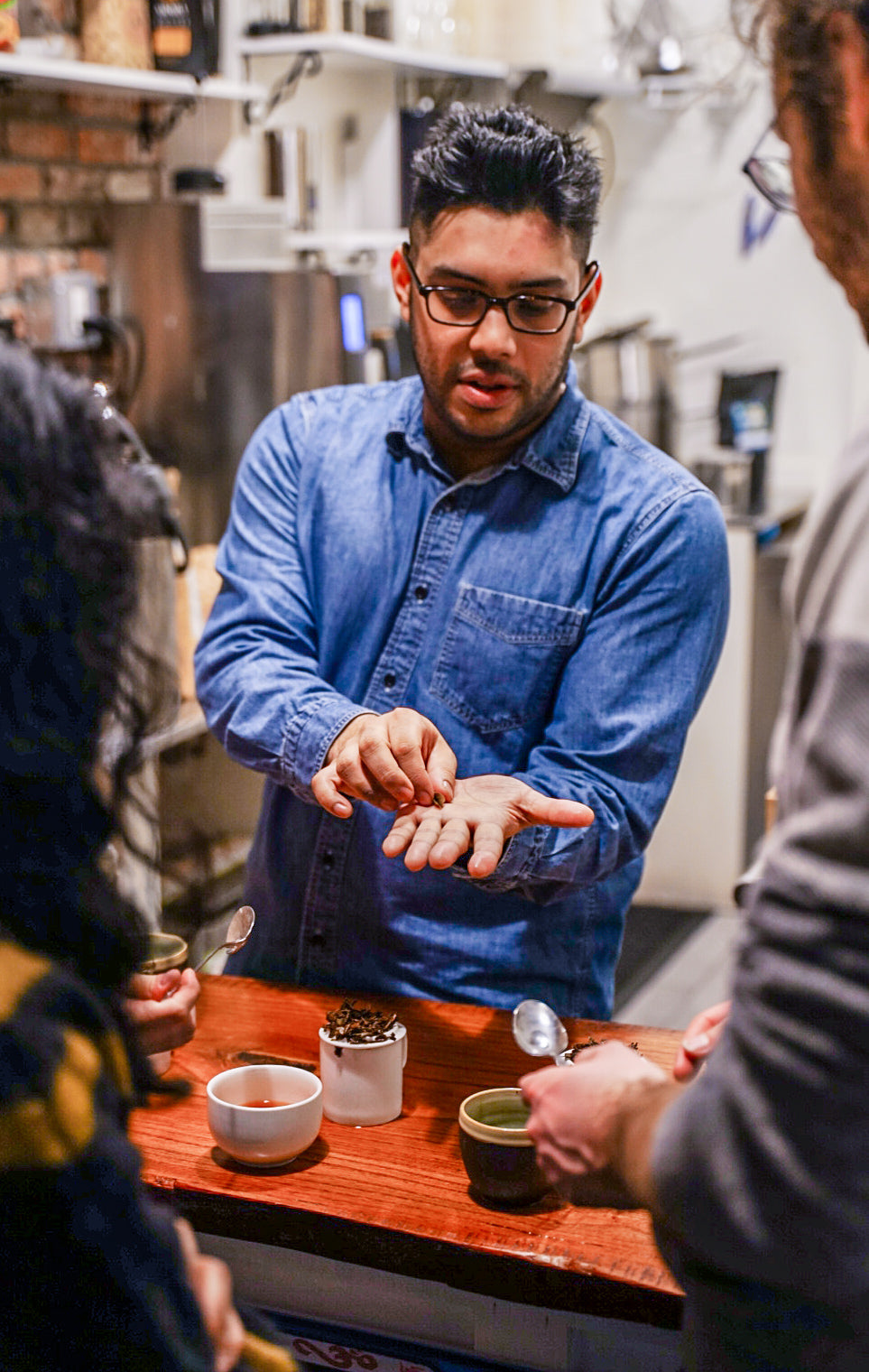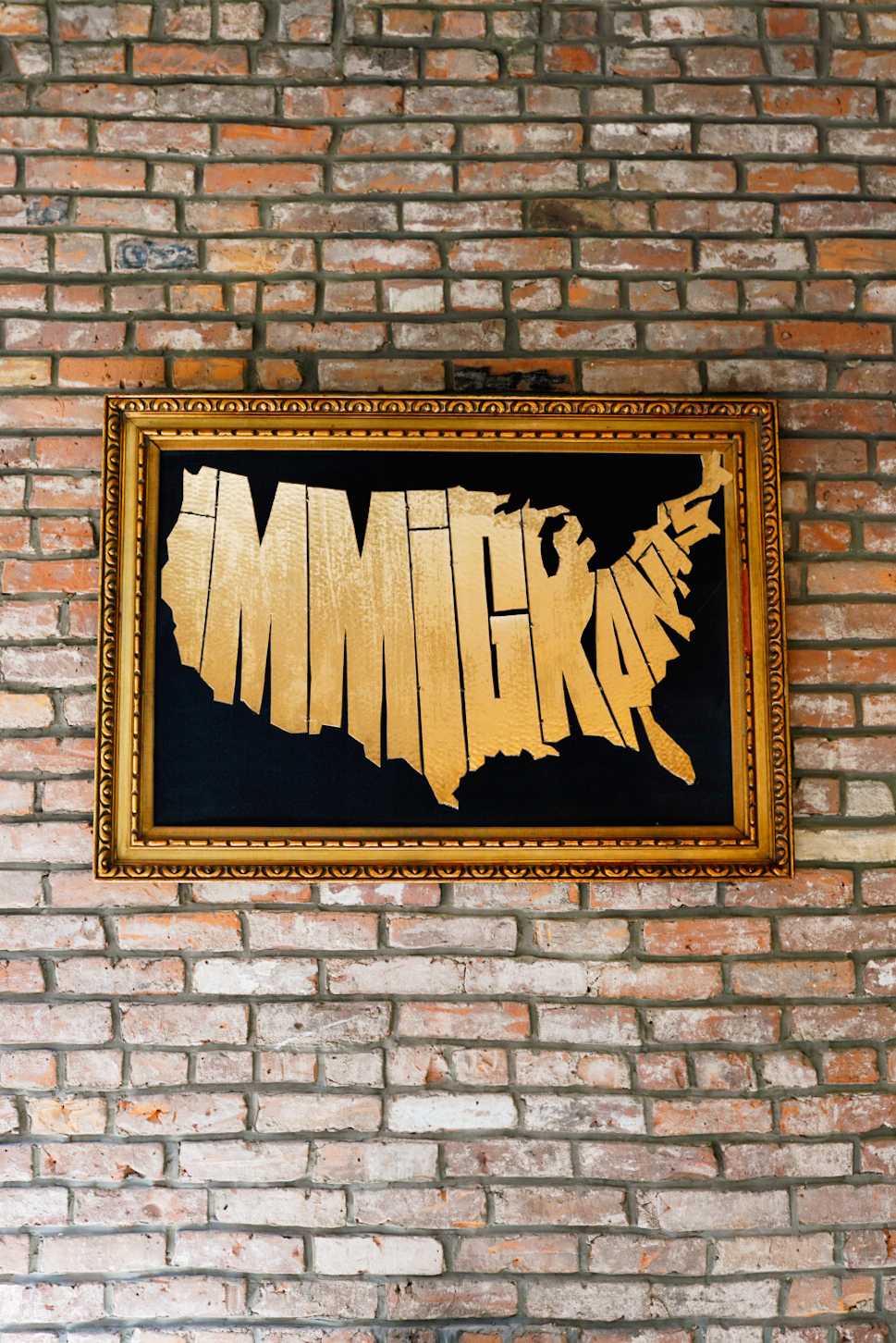- — KCC BLOG — KCC BLOG — KCC BLOG — KCC BLOG — KCC BLOG — KCC BLOG
- — KCC BLOG — KCC BLOG — KCC BLOG — KCC BLOG — KCC BLOG — KCC BLOG
About Chai
History of Chai
While you might be accustomed to drinking a chai latte at a trendy cafe in your city, chai is an ancient, traditional beverage that has been around for thousands of years.
The legend begins in China, in the year 2737 BC. While seated for leisure in his palatial grounds, the Emperor Shennong was waiting for his daily cup of hot water. Brought to him by a trusted, albeit careless, servant, a dried tea leaf had found its way into the chalice. The emperor sipped his usual hot water, but found it invigorating. The tannins – astringent, polyphenolic biomolecules that exist in all tea leaves, had made this beverage tasty, refreshing, and memorable.
This was the birth of tea that would soon dominate China’s culture and trade.
Trade
When the British conquered India, they had already developed a habit of drinking tea with milk and sugar. What they didn’t have yet, were their own tea plants. The British tea habit was made possible by trading with China but that was slowly becoming more expensive.
The British then sent a Scotsman by the name of Robert Bruce to bring tea plants from China to the Assam region of India in an effort to start their own tea plantations.
Indian tea was promoted as more wholesome, cheaper, and better than the Chinese counterpart and it didn’t help when it was discovered that the Chinese were treating their tea with ferric ferrocyanide and gypsum salts to give it a greener tinge.
The Indian tea trade flourished. By 1888, Indian tea exports into Britain were at 86 million pounds per year. Once Black Tea from India gained popularity, the British realized they needed to promote its consumption locally, as well.
The Beginning of Masala Chai
However, the tea was prohibitively expensive for the local population so some innovation would be required. In order to stretch a normal serving of tea leaves into more cups of chai, the Indian people started mixing it with spices, milk and sugar and made it their own. Spices like ginger, cinnamon, green cardamom, star anise, black pepper and cloves found their way into chai.
This was how masala chai was born and soon took over the subcontinent.
Introduction to the West
As masala chai became ubiquitous in India after independence, it could be found across roadside stalls, high end restaurants, mom and pop cafes and in almost every Indian household. As travel to India from the Americas increased in the 1970s and 1980s, the audience for chai grew exponentially and it was warmly embraced by the “hippie” communities.
In 1994, a company by the name of Oregon Chai products first introduced a chai tea latte powdered mix to the US and Starbucks followed it up with their version of chai latte soon after. For decades since, chai has been misrepresented and appropriated in the Western World as this sweet, exotic elixir instead of the hearty, healthy drink it is.
In 2018, two brothers of South Asian descent started Kolkata Chai Co in New York City as a way to reclaim the narrative around chai and introduce an authentic option in the market. After opening the first chai cafe in New York in 2019, they continued to expand their business, introducing a critically acclaimed Chai Mix in 2020.
Tea in India
The history of tea in India is one filled with global trade, international politics and ancient Ayurvedic science. Blend them together and you have something to chat about over a cup of chai.
It all starts with the reality that tea plants are native to only two regions in the world: China and India.
When a Scotsman named Robert Bruce became aware of the tea plantations in Assam in 1823, he sought a friendship with the local leader at the time. The Sanghpo tribesman, Bessa Gaum, gifted Bruce with seeds and samples which Bruce promptly took across the border to India.
Recognizing the high-value of the prized beverage that could compete against the predominant Chinese tea market, the British East India Company began the full fledged commercial production of tea and is still flourishing today.
Trade
After being discovered nearly 5000 years ago in China, tea became a key part of global trade, starting as early as the year 879. It became the commodity of choice for the Dutch East India Company, Italian and Portuguese merchants and the infamous British East India Company.
Here are 3 reasons why tea gained such popularity through the 16th-18th centuries:
Tea was initially introduced as a medicinal beverage for the European elite, an imported luxury that only few could afford
A 95% drop in coffee production in the 19th century due to a rare fungus that spread across Ceylon, further cemented tea’s popularity
The increasing availability of cane sugar which allowed the British to enjoy their tea sweetened. Due to the rising demand for tea, the colonial regime’s then smuggled tea plants from China to India to grow across Assam, Darjeeling and Ceylon
Simply put, the British Empire was responsible for the popularization of tea during this time. They made tea an integral part of the global economy, and built a fortune in the process (while extracting billions in wealth from its colonies, specifically India).
Though the tea trade initially was meant for export, the British soon realized the great potential of promoting and selling the beverage to the local people of India. Once it became readily available and affordable, it didn’t take long for chai to become a popular drink amongst Indians.
Combining spices with water was already popular in Ayurvedic practices as cardamom and cloves were at the center of ancient healing rituals. The added boost of energy from the malty and stringent Assam Black tea was embraced by the local population and masala chai soon became ubiquitous.
Indian tea industry
Chai is the national drink of India. While the original word ‘cha’ literally refers to the tea leaf; chai in India refers to the fragrant symphony of warm spices and black tea infused with milk.
The Indian tea industry today is the world’s 2nd largest and it’s consistently one of the largest tea producers in the world. Today, Indian tea gardens have expanded beyond just Chabua in Assam to those in Darjeeling, where Chinese seeds were planted in 1835.
Indian tea companies produced a whopping 3.9 million pounds of tea in 1874. The tea trade has continued to flourish after India’s independence in 1947 and in 2021, India produced 1,283 million kgs of tea. Now, that’s a lot of chai.
Consumption
Chai is the ultimate comfort beverage. The national drink of India, a total of 1.1 billion kilograms of chai was consumed in India in 2022. Chai is consumed 5x more than coffee in the South Asian subcontinent.
The per capita consumption of tea in India, however, is moderate - ranking 28th on the international list, primarily because of the way it is consumed in India. A lot of it is consumed in tiny “cutting glasses'' where the proportions are a lot less to keep it affordable for working class individuals, young people and everyone in between.
Production
The Indian market for tea is second only to China. Indian tea production dates back to 1903 when the Indian Tea Cess Bill was passed. The law levied tax on tea exports, and its proceeds were used to promote tea both in India and outside.
Market
The tea market is one of the primary exports in India. New demand arising in Western countries and continued consumption of the Middle East make tea a formidable player in international commerce.
While historical data points to Ayurvedic beverages featuring spices, tea is documented to have been consumed by Indians since the 15th century.
Industry
But the mass market and demand for tea really developed once the British East India Company began promoting it locally in India in an effort to outdo neighboring China.
Today, even after centuries, the tea industry is one of the most significant trades in the world.
Tea market
China, India, Kenya, Sri Lanka, and Vietnam are usually the top exporting countries in terms of the tea market. Weather and natural calamities other than the winds, determine which country will profit the most, but as demand grows, the Indian tea industry is experiencing a boom in demand.
Growth
The expected production of tea in India will surpass ~500 million pounds this year in India. This is in the face of excessive rain, drop in prices, and raising wages for tea plantation workers which shows how the
sheer demand for Indian tea is on the rise worldwide.
Domestic consumption of tea is also on the rise. The consumption estimates for 2022 for India alone are at 1.3 million tons.
A country known for its no-nonsense affordable cups of masala chai is moving to the specialty world. As millennials and Gen Z’ers join the workforce, they increasingly have access to disposable incomes which weren’t there before. Noticing the love for cafe culture, Indian companies have joined the rest of the world by introducing sophisticated tea cafes that feature progressive interior design, music and chill vibes for the new India to sip.
The domestic market for chai in India is constantly evolving and growing.
Production
Tea gardens in Assam, Darjeeling, and Nilgiri are responsible for the bulk of production in India today. Together, they produce a variety of black and green teas ready for export. There are also smaller tea gardens present in Dehradun, Garhwal, Kangra Valley and Kulu.
Companies
Although private tea plantations and tea gardens try to etch out a name for themselves, the majority of tea companies in India are conglomerates with a refined manufacturing and distribution cycle.
Tata Global Beverages, McLeod Russel India, Rossell India, Jay Shree Tea & Industries, and Assam Company are a few of the 30 listed companies devoted to the production and distribution of tea.
Tea and India have a long history. Published accounts show that the people have had a deeply special relationship with tea as early as the 15th century.
Today, tea is the second most popular beverage (after water), and masala chai is growing in popularity every day. Speaking of which, have you had your cup of the day yet?
What is National Chai Day?
Every year on September 21st, we celebrate National Chai Day as a way to bring awareness and educate the world about the wonders of chai.
In pure coincidence, our first Kolkata Chai cafe in NYC was founded in the same week as National Chai Day and we make it a point to celebrate every year with free chai, a live DJ and giveaways for all those who make it. In 2021, we even gave away a year’s supply of free chai to a lucky winner!
Naturally, the best way to celebrate National Chai Day is to savor the unique taste and flavor profile of masala chai. From the sweet to the spicy, there’s no other drink like it. If you’re looking to make chai at home on this day, choose from one of our Chai Mixes to help make the perfect cup in minutes.
Benefits of chai
Besides the great flavors, there are a ton of benefits to chai. Chai helps improve focus due to L-theanine, which is the amino acid responsible for the slower release of caffeine in the body.
Depending on the spices that your cup of chai has, it can also help in lowering blood pressure, fighting high blood sugar and alleviating pain and indigestion.
Making Chai at Home
The process of brewing chai is entirely up to you. There’s the traditional chai and there’s also iced chai. You can brew a cup with regular milk or add a creamy coconut milk for a bold flavor. Check out these recipes as you gear up for National Chai Day or follow this one below for a classic cup:
Bring 1 cup water to simmer and add 3 tsp of Kolkata Chai Chai Mix
Grate or mince a piece of fresh ginger into the boil (optional)
Bring to a rolling boil brew for 3 minutes and add 1 cup milk (or alternative milk) of your choice
Bring to boil, turn off heat
Cover and steep for 3 minutes. Strain, add sugar as needed
Cheers!







